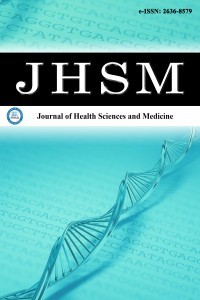1.
Opdam NJ, Bronkhorst EM, Loomans BA, Huysmans MC. 12-year survival of composite vs. amalgam restorations. <em>J Dent Res.</em> 2010;89(10):1063-1067. doi:10.1177/0022034510376071
2.
Drummond, JL. Degradation, fatigue, and failure of resin dental composite materials. <em>J Dent Res.</em> 2008;87(8):710-719.
3.
Ekren O, Özkömür A, Gürbüz CC. Besin taklidi sıvıların üç farklı geçici kron materyalinin yüzey sertliğine etkisi. <em>EÜ Diş Hek Fak Derg.</em> 2014;35:23-27.
4.
Budavari S, O’Neil MJ, Smith A, et al. (eds). 288 Sodium Lauryl Sulfate. Dictionary of Contact Allergens: Chemical Structures, Sources, and References. In: Kanerva’s Occupational Dermatology. 3<sup>th</sup> ed. 2020:2357-2471.
5.
O’Neil, MJ. The merck index-an encyclopedia of chemicals, drugs, and biologicals. whitehouse station, NJ: Merck and Co. Inc. 2001;767:4342.
6.
Badra VV, Faraoni JJ, Ramos RP, Palma-Dibb RG. Influence of different beverages on the microhardness and surface roughness of resin composites. <em>Oper Dent.</em> 2005;30(2):213-219.
7.
Garcia FC, Wang L, D’Alpino PH, Souza JB, Araújo PA, Mondelli RF. Evaluation of the roughness and mass loss of the flowable composites after simulated toothbrushing abrasion. <em>Braz Oral Res.</em> 2004;18(2):156-161. doi:10.1590/s1806-83242004000200012
8.
Hunter G, Lane DM, Scrimgeour SN, McDonald PJ, Lloyd CH. Measurement of the diffusion of liquids into dental restorative resins by stray-field nuclear magnetic resonance imaging (STRAFI). <em>Dent Mater.</em> 2003;19(7):632-638. doi:10.1016/s0109-5641(03)00006-x
9.
Sonkaya E, Akbiyik SY, Bakir EP, Bakir Ş. Posterior direkt restorasyonlarda nerede başarısızlık yaşıyoruz? <em>Düzce Üniv Sag Bil Enst Derg.</em> 2021;11(2):242-249.
10.
Turssi CP, Hara AT, Serra MC, Rodrigues AL. Effect of storage media upon the surface micromorphology of resin-based restorative materials. <em>J Oral Rehabil.</em> 2002;29(9):864-871. doi:10.1046/j.1365-2842.2002.00926.x
11.
Ferracane JL. Hygroscopic and hydrolytic effects in dental polymer networks. <em>Dent Mater.</em> 2006;22(3):211-22.
12.
Toledano M, Osorio R, Osorio E, Fuentes V, Prati C, Garcia-Godoy F. Sorption and solubility of resin-based restorative dental materials. <em>J Dent.</em> 2003;31(1):43-50. doi:10.1016/s0300-5712(02)00083-0
13.
Yap AU, Tan C, Chung S. Wear behavior of new composite restoratives. <em>Operative Dentis-Uni Washington. </em>2004;29:269-74.
14.
Yap AU, Chew CL, Ong LF, Teoh SH. Environmental damage and occlusal contact area wear of composite restoratives. <em>J Oral Rehabil.</em> 2002;29(1):87-97. doi:10.1046/j.1365-2842.2002.00797.x
15.
Yap AU, Tan SH, Wee SS, Lee CW, Lim EL, Zeng KY. Chemical degradation of composite restoratives. <em>J Oral Rehabil.</em> 2001; 28(11):1015-1021. doi:10.1046/j.1365-2842.2001.00760.x
16.
Alshali RZ, Salim NA, Satterthwaite JD, Silikas N. Long-term sorption and solubility of bulk-fill and conventional resin-composites in water and artificial saliva. <em>J Dent.</em> 2015;43(12):1511-1518. doi:10.1016/j.jdent.2015.10.001
17.
Ortengren U, Wellendorf H, Karlsson S, Ruyter IE. Water sorption and solubility of dental composites and identification of monomers released in an aqueous environment. <em>J Oral Rehabil.</em> 2001;28(12):1106-1115. doi:10.1046/j.1365-2842.2001.00802.x
18.
Hahnel S, Henrich A, Bürgers R, Handel G, Rosentritt M. Investigation of mechanical properties of modern dental composites after artificial aging for one year. <em>Oper Dent.</em> 2010; 35(4):412-419. doi:10.2341/09-337-L
19.
Genç G, Toz T. Rezin kompozitlerin renk stabilitesi ile ilgili bir derleme: kompozit renklenmelerinin etyolojisi, sınıflandırılması ve tedavisi. <em>Ege Üni Diş Hek Fak Derg.</em> 2017;38(2):68-79.
20.
Münchow EA, Ferreira AC, Machado RM, Ramos TS, Rodrigues-Junior SA, Zanchi CH. Effect of acidic solutions on the surface degradation of a micro-hybrid composite resin. <em>Braz Dent J.</em> 2014;25(4):321-326. doi:10.1590/0103-6440201300058
21.
Özcan S, Şahin FÜ, Uzun Ö, Topuz Ö. Bitirme ve parlatma işlemlerinin farklı kompozit rezinlerin yüzey özellikleri üzerine etkileri. <em>GÜ Diş Hek Fak Derg.</em> 2012;29(3),173-177.
22.
Giacomelli L, Derchi G, Frustaci A, et al. Surface roughness of commercial composites after different polishing protocols: an analysis with atomic force. <em>Open Dent J.</em> 2012;6:189.
23.
Senawongse P, Pongprueksa P. Surface roughness of nanofill and nanohybrid resin composites after polishing and brushing. <em>J Esthet Restor Dent.</em> 2007;19(5):265-275. doi:10.1111/j.1708-8240. 2007.00116.x
24.
Kakaboura A, Fragouli M, Rahiotis C, Silikas N. Evaluation of surface characteristics of dental composites using profilometry, scanning electron, atomic force microscopy and gloss-meter. <em>J Mater Sci Mater Med.</em> 2007;18(1):155-163. doi:10.1007/s10856-006-0675-8
25.
Marghalani HY. Effect of filler particles on surface roughness of experimental composite series. <em>J Appl Oral Sci.</em> 2010;18(1):59-67. doi:10.1590/s1678-77572010000100011
26.
Jones CS, Billington RW, Pearson GJ. The in vivo perception of roughness of restorations. <em>Br Dent J.</em> 2004;196(1):42-31. doi:10. 1038/sj.bdj.4810881
27.
Heintze SD, Forjanic M, Rousson V. Surface roughness and gloss of dental materials as a function of force and polishing time in vitro. <em>Dent Mater.</em> 2006;22(2):146-165. doi:10.1016/j.dental.2005.04.013
28.
Türkün LS, Türkün M. The effect of one-step polishing system on the surface roughness of three esthetic resin composite materials. <em>Oper Dent.</em> 2004;29(2):203-211.
29.
Prabhakar AR, Mahantesh T, Vishwas TD, Kabade A. Effect of surface treatment with remineralizing on the color stability and roughness of esthetic restorative materials. <em>Arch Oral Res.</em> 2009:5(1):19-27.
30.
Davidson CL. Advances in glass-ionomer cements. <em>J Applied Oral Sci.</em> 2006;14(SPE):3-9.
31.
Eick S, Glockmann E, Brandl B, Pfister W. Adherence of Streptococcus mutans to various restorative materials in a continuous flow system. <em>J Oral Rehabil.</em> 2004;31(3):278-285. doi:10.1046/j.0305-182X.2003.01233.x
32.
Welbury RR, Shaw AJ, Murray JJ, Gordon PH, McCabe JF. Clinical evaluation of paired compomer and glass ionomer restorations in primary molars: final results after 42 months. <em>Br Dent J.</em> 2000;189(2):93-97. doi:10.1038/sj.bdj.4800693.
33.
Abdallah AM, Mehesen R. Effect of food simulating solutions on surface roughness of four restorative materials. <em>Al-Azhar J Dent Sci.</em> 2022;25(1):23-29.
34.
Kedici Alp C, Arslandaş Dinçtürk B, Altınışık H. The effect of food-simulating liquids on surface features of single-shade universal composites: an in vitro study. <em>J Int Soc Prev Community Dent.</em> 2023;13(2):157-165. doi:10.4103/jispcd.JISPCD_233_22
35.
Zhang L, Weir MD, Chow LC, Reynolds MA, Xu HH. Rechargeable calcium phosphate orthodontic cement with sustained ion release and re-release. <em>Sci Rep.</em> 2016;6:36476. doi:10.1038/srep36476
36.
Yap AU, Lee MK, Chung SM, Tsai KT, Lim CT. Effect of food-simulating liquids on the shear punch strength of composite and polyacid-modified composite restoratives. <em>Oper Dent.</em> 2003;28(5):529-534.
37.
Voltarelli FR, Santos-Daroz CB, Alves MC, Cavalcanti AN, Marchi GM. Effect of chemical degradation followed by toothbrushing on the surface roughness of restorative composites. <em>J Appl Oral Sci.</em> 2010;18(6):585-590. doi:10.1590/s1678-77572010000600009
38.
Eweis AH, Yap AU, Yahya NA. Impact of dietary solvents on flexural properties of bulk-fill composites. <em>Saudi Dent J.</em> 2018;30(3):232-239. doi:10.1016/j.sdentj.2018.04.002

